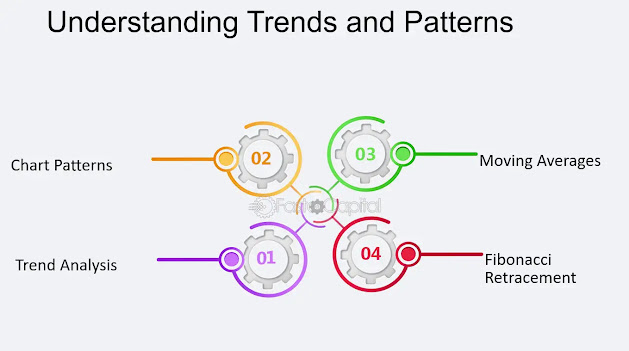Mastering Chart Patterns in Forex Trading: Strategies for Recognition and Utilization
Chart patterns are invaluable tools for traders in the foreign exchange (Forex) market, providing insights into potential price movements and aiding in decision-making. Recognizing these patterns allows traders to anticipate market direction, plan entry and exit points, and manage risk effectively. Here are some effective strategies and tricks to identify and utilize chart patterns in Forex trading.
Understanding Chart Patterns
1. Types of Chart Patterns:
- Reversal Patterns: Signal potential trend reversals. Examples include Head and Shoulders, Double Tops, and Double Bottoms.
- Continuation Patterns: Indicate a temporary pause in the prevailing trend before continuation. Examples include Flags, Pennants, and Triangles.
2. Importance of Timeframes: Chart patterns can appear on various timeframes, such as daily, hourly, or even minute charts. Consider the timeframe relevant to your trading strategy for accurate analysis.
Strategies for Recognition
1. Visual Observation:
- Train your eye to recognize patterns through visual inspection of price charts. Familiarize yourself with various patterns and their appearances.
2. Use Technical Analysis Tools:
- Utilize charting software and tools that automatically detect and highlight patterns. This can save time and ensure accuracy in pattern identification.
3. Combine Patterns with Other Indicators:
- Confirm patterns using other technical indicators like moving averages, RSI (Relative Strength Index), MACD (Moving Average Convergence Divergence), or Fibonacci retracement levels for added confirmation.
Utilization and Trading Strategies
1. Entry and Exit Points:
- Enter trades when a pattern's confirmation criteria are met (e.g., breakout of a triangle's support or resistance). Determine exit points based on the pattern's projected price target.
2. Risk Management:
- Set stop-loss orders to limit potential losses if the market moves against your position. Adjust risk-to-reward ratios based on the pattern's reliability and market conditions.
3. Combine Patterns for Confluence:
- Look for confluence by identifying multiple patterns aligning with the same market direction. This strengthens the potential trade setup.
Best Tricks for Pattern Recognition
1. Backtesting and Practice:
- Practice identifying patterns by backtesting historical charts. This helps in gaining proficiency and understanding the reliability of different patterns.
2. Patience and Confirmation:
- Wait for confirmation of patterns before entering a trade. Premature entries can lead to false signals.
3. Continuous Learning:
- Stay updated with market developments and continuously learn from successful and failed trades. Adapt your strategies based on evolving market conditions.
Conclusion
Chart patterns are powerful tools that enable traders to interpret market sentiment and make informed trading decisions in the Forex market. By mastering the recognition and utilization of these patterns, traders can increase their probabilities of success. Remember, while chart patterns offer valuable insights, they are not foolproof. Utilize them in conjunction with other technical analysis tools and risk management strategies for a well-rounded trading approach. Continuous practice, analysis, and adaptation are key to harnessing the potential of chart patterns effectively in Forex trading.

Post a Comment for " Mastering Chart Patterns in Forex Trading: Strategies for Recognition and Utilization"
Berkomentarlah dengan hal yang bersangkutan, jika mengandung spam atau mencantumkan Url aktif maka komentar akan terhapus secara otomatis. :)